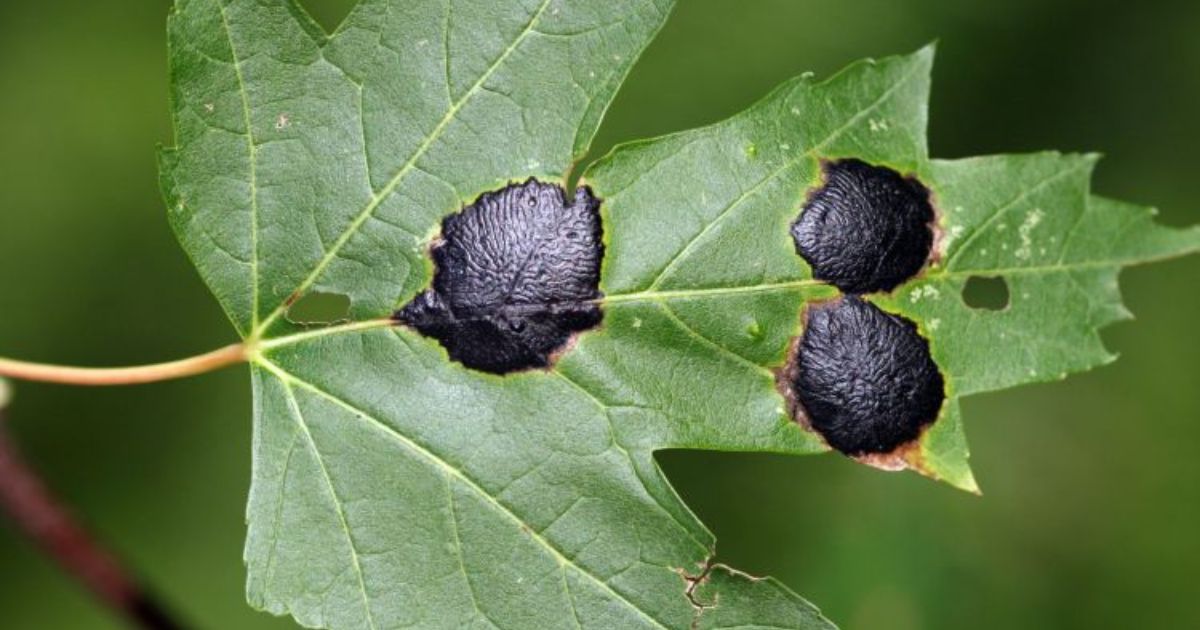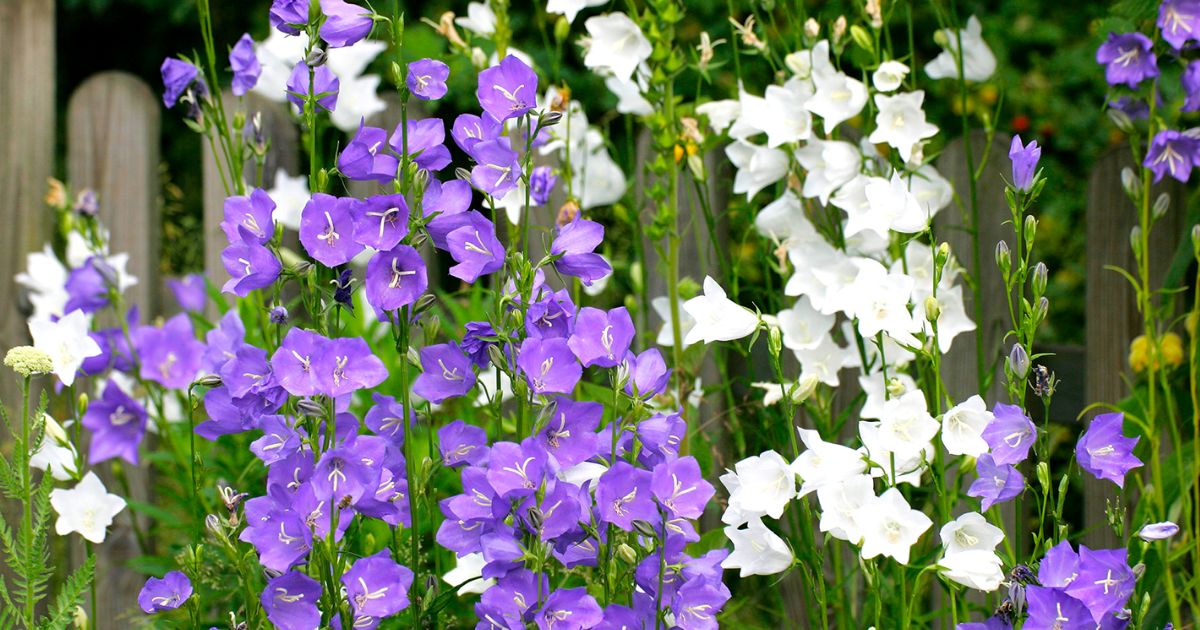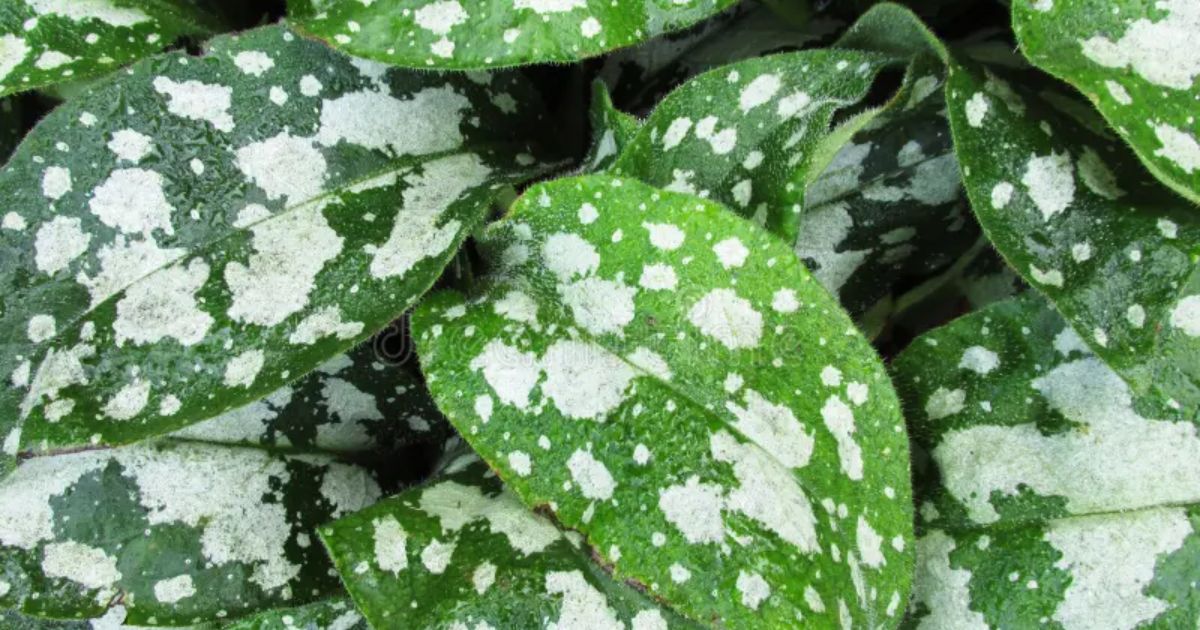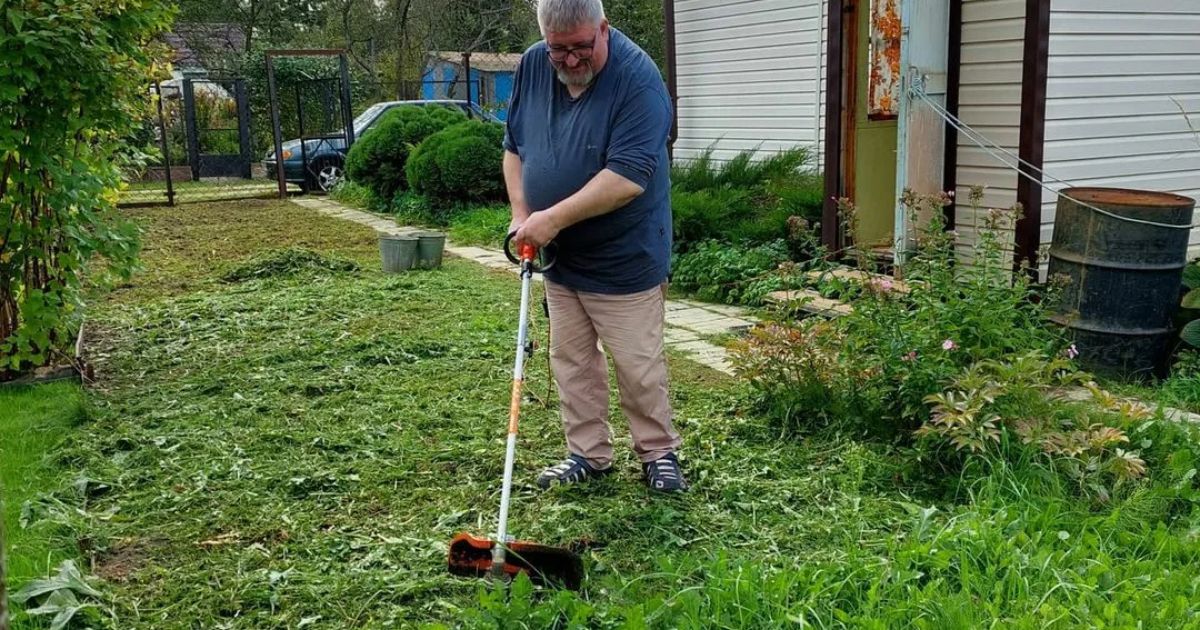Campanula persicifolia, commonly known as the Peach-Leaved Bellflower, is a stunning perennial that brings elegance and charm to any garden. With its graceful, bell-shaped flowers and soft, peach-like leaves, it adds a delicate touch to borders, cottage gardens, and containers alike. Known for its tall, upright growth and clusters of blooms that range from crisp white to vibrant shades of blue and purple, this plant is both visually striking and relatively easy to cultivate, making it a favorite among gardeners of all skill levels.
Beyond its ornamental appeal, campanula persicifolia peach leaved bellflower is valued for its resilience and adaptability. It is adaptable to various garden environments, as it can withstand partial shade and thrive in a range of climates. Its lengthy flowering season and capacity to draw pollinators, such as butterflies and bees, increase its garden value even more.In this comprehensive guide, we’ll cover all you need to know to cultivate peach-leaved bellflowers. This book provides valuable information, covering everything from soil preferences and ideal planting conditions to care tips, common problems, cottage garden flowers and propagation methods. To ensure your Campanula persicifolia thrives and continues to bring beauty to your garden year after year.
What Is Campanula Persicifolia? A Botanical Introduction
Campanula persicifolia belongs to the Campanulaceae family, a diverse group comprising over 400 species known for their bell-shaped flowers (from the Latin campana, meaning “bell”). The specific epithet persicifolia translates to “peach-leaved,” a nod to its narrow, glossy leaves that resemble those of a peach tree, lance-shaped, toothed, and a vibrant green that adds year-round interest.This herbaceous perennial forms a basal rosette of evergreen or semi-evergreen foliage, from which sturdy, unbranched stems rise like slender towers, reaching 18-36 inches (45-90 cm) in height and spreading 12-18 inches (30-45 cm) in width. The stems are clad in linear, pointed leaves that wither slightly as the plant focuses energy on blooming. Come late spring to mid-summer, the show begins: large, outward-facing, cup-shaped flowers up to 2 inches (5 cm) across dangle or nod in clusters along the top third of the stems. Classic varieties sport lilac-blue petals, but selections like ‘Alba’ offer pure white elegance, while ‘Takion Blue’ delivers compact, upward-facing lavender bells.

What sets Peach-Leaved Bellflower apart is its graceful habit, being clump-forming without aggressive spreading, and its appeal to pollinators. Bees, butterflies, The Best Types of Flowers for Every Garden Style and Climate and even hummingbirds flock to the nectar-rich blooms, making it a biodiversity booster. Historically, it has been cultivated since medieval times, symbolizing gratitude in the language of flowers, or floriography. Its edible parts, including roots (raw or cooked) and young leaves in salads, add a forager’s delight; however, always confirm with local experts.Hardy in USDA zones 3-8, it thrives in cool summers (think Midwest or northern U.S.) but falters in extreme heat south of zone 7 without shade and extra water. Deer- and rabbit-resistant, low-maintenance, and non-invasive (unlike its weedy cousin, C. rapunculoides), it’s a wise choice for sustainable gardens.
Why Grow Peach-Leaved Bellflower?
Beyond its aesthetic allure, Campanula persicifolia is a multitasker. Its vertical form creates airy vertical accents in borders, softening the hard edges of walkways or fences. In cottage-style gardens, it mingles beautifully with salvias, catmints, and daylilies for a romantic, pollinator-friendly tableau. Rock gardens benefit from dwarf varieties like ‘Blue-eyed Blonde,’ whose golden foliage emerges in spring, fading to lime-green as violet-blue spikes rise.Ecologically, it’s a powerhouse: the open-mouthed flowers allow easy access for short-tongued bees, boosting local yields of fruits and veggies nearby. Plus, its drought tolerance once established (after the first year) suits water-wise landscapes, and self-seeding ensures gentle naturalization without takeover.
For cut-flower enthusiasts, the long stems (up to 3 feet) provide stunning bouquets with a vase life of 7-10 days. Indoors, it’s a container star on patios or as a windowsill companion, provided it gets bright, indirect light. Varieties like double-flowered ‘Freckles’ add texture, while ‘Chettle Charm’ offers pink-lavender hues for color pops. In short, if you crave low-fuss beauty that supports wildlife, this bellflower rings true.
Getting Started: Selecting and Planting Peach-Leaved Bellflower
Choosing Your Plants
Start with healthy nursery stock: Look for firm, glossy rosettes that are free from yellowing or spots. Opt for bare-root divisions in spring or potted plants year-round. For seeds, source from reputable suppliers like Plant Flower Seeds, ensuring fresh viability (germination rates drop after 2 years). Popular cultivars include:
- ‘Takion Blue’: Compact (16-20 inches), prolific blue bells; ideal for small spaces.
- ‘Alba’: White-flowered elegance, 2-3 feet tall; great for moon gardens.
- ‘Blue-eyed Blonde’: Golden foliage contrast, 8-24 inches; zones 4-8.
Optimal Planting Conditions
Timing is key: Plant in spring after the frost or in early fall for optimal root establishment. Site selection favors full sun (6+ hours) in cool climates, shifting to partial afternoon shade (4-6 hours of sun) in hotter zones to prevent scorching. Space clumps 12-18 inches apart to allow for airflow and to avoid mildew.
Soil is crucial: Aim for fertile, well-drained loam with neutral to slightly alkaline pH (6.5-7.5). Amend heavy clay with grit or compost to improve drainage. To retain moisture in sandy soils, add organic materials. Test your soil with a kit—does it have a low pH? Add lime; poor drainage? Raised beds work wonders.
Step-by-Step Planting Guide
- Set Up the Location: Create a hole that is twice the width of the root ball. , to the same depth. Mix in compost for nutrients.
- Plant: Set the crown at soil level. Gently backfill, compacting the dirt to remove any air pockets. Water deeply to settle.
- Mulch: Apply 2 inches of organic mulch (such as bark or straw) around the base, keeping it away from the stems to prevent rot.
- Initial Care: Water weekly until established (approximately 6-8 weeks), providing 1 inch of water per week. Stake tall varieties early if windy.
Use pots that are at least 12 inches wide for containers. How to Grow Garlic: Planting, Caring, and Harvesting Tips Wide with drainage holes, filled with potting mix amended with perlite. Group three for a fuller display.
Essential Care Tips: Nurturing Your Peach-Leaved Bellflower

Watering Wisely
New plants require consistent moisture and aim for evenly moist soil without becoming too sogginess. Water deeply (soak to a depth of 6-8 inches) every 5-7 days in spring/summer, reducing to bi-weekly once the plant is rooted. During dry spells, morning watering helps minimize evaporation and reduce the risk of fungal infections. Overwatering invites root rot, so check soil dryness with your finger (1 inch down). Mulch conserves water, potentially halving needs in established beds. In hot zones, supplemental irrigation sustains blooms.
Sunlight and Temperature
Full sun fuels profuse flowering, but afternoon shade shields from heat stress (above 80°F/27°C). Ideal temperatures: 60-75°F (15-24°C) during the day, cooler nights. Protect from harsh winds with stakes or companions. In Zone 7+, mist foliage on hot days to increase humidity.
Fertilizing for Flourishes
Low-key feeders, bellflowers need minimal boost. In spring, apply a balanced, slow-release granular (10-10-10) at half-strength, or side-dress with compost. Liquid seaweed every 4-6 weeks during growth promotes blooms without excess nitrogen (which favors leaves over flowers). How Do You Harvest Seeds Avoid late-summer feeding to harden off for winter. Yellow leaves? Test for deficiencies: iron chelates fix chlorosis in alkaline soils.
Pruning and Deadheading
Deadheading is non-negotiable for rebloom: Snip faded flowers just above a leaf node to encourage secondary flushes, extending the show into fall. Post-bloom, cut stems to basal foliage to tidy and prevent self-seeding (unless desired). In late spring, the “Chelsea chop” shearing, which reduces plants by one-third, yields bushier plants and staggered blooms.
Foliage maintenance: Remove damaged leaves at any time. In the fall, cut back to 4 inches for a neat winter preparation. Evergreen in mild zones, it provides subtle structure through dormancy.
Propagation: Multiply Your Magic
Campanula persicifolia multiplies easily, white bellflower offering an abundance of free plants.
From Seeds
Sow indoors 8-10 weeks before last frost: Surface-sow on sterile mix (light aids germination, 70-75°F/21-24°C, 14-21 days). Thin seedlings; harden off before transplanting 12 inches apart. Direct-sow in fall for natural stratification. Expect variability in hybrids.
Division
Every 2-4 years, in spring or fall, dig clumps and tease apart rhizomes with healthy roots/ shoots. Replant immediately; water well. Success rate: 90%+.
Basal Cuttings
In spring, snip 2-3 inch non-flowering shoots with heels. Root in moist sand/perlite under mist; transplant after 4-6 weeks. Ideal for rare varieties.
Pro tip: Label propagules self-sown seedlings may revert to single blue flowers.
Varieties Spotlight: Choosing Your Bellflower Style
- Standard Blue: Classic 3-foot spikes; vigorous self-seeder.
- ‘Telham Beauty’: Double lavender bells; formal elegance.
- ‘White Pearl’: Snowy clusters for contrast.
- ‘Grandiflora Alba’: Large white cups; cut-flower favorite.
Each adapts similarly, but those who double may need extra support.
Troubleshooting: Common Problems and Solutions
Pests: Slugs adore tender shoots. Use beer traps or diatomaceous earth to control them. Aphids? Blast with water or neem oil. Rarely, spider mites stipple leaves in dry heat; increase humidity.
Diseases: Powdery mildew (characterized by white spots) typically strikes in humid, shady areas. Improve air circulation and apply a baking soda spray (1 tablespoon per gallon of water). Root rot from wet feet? How Far Apart to Plant Strawberry Plants for Optimal Growth Repot in a sterile mix. Viral mosaics (yellow mottling) warrant removal.
No blooms? Too much shade/nitrogen or immature plants (wait year 2). Leggy growth? Pinch tips early. Winter dieback in cold zones? Mulch heavily.
Companion Planting: Harmonizing with Peach-Leaved Bellflower
Pair with low-growing plants tall flowering plants , such as creeping phlox, for ground cover, or tall delphiniums for vertical drama. Drought-tolerant sedums or alliums add texture; salvia ‘May Night’ echoes blue tones. In veggies, it deters aphids near carrots. Avoid aggressive spreaders like mint.
Winter Care and Longevity
In zones 3-6, apply 3-4 inches of mulch after the frost for insulation. Cut back debris to deter rodents. In mild areas, leave basal rosettes for protection. Expect 5-10 years from divisions; How to Grow Forget-Me-Not – A Complete Guide rejuvenate as needed. Spring cleanup reveals fresh growth.
Creative Ideas: Beyond the Border

- Containers: Thrillers in mixed pots with trailing lobelia.
- Cut Flowers: Harvest half-open for longevity; condition in cool water.
- Edible Garden: Young leaves in pesto; roots roasted like parsnips.
- Pollinator Patch: Mass-plant for a buzzing haven.
Conclusion
Campanula persicifolia, the Peach-Leaved Bellflower, is a beautiful and versatile perennial that can transform any garden space with its elegant bell-shaped blooms and graceful foliage. By understanding its growth habits, sunlight and soil requirements, and watering and fertilization needs, gardeners can cultivate healthy plants that flourish year after year. Regular care, including deadheading, pruning, and monitoring for pests and diseases, ensures vibrant flowers and strong, upright growth.
Propagation through seeds, division, or cuttings allows gardeners to expand their collection and share this lovely plant with others, making it a rewarding addition to both private and public gardens. Its adaptability to different garden conditions, along with its ability to attract pollinators, further underscores its value as a perennial.
With patience and consistent care, your perennial garden flowers will provide long-lasting beauty, seasonal color, and a touch of charm to your outdoor space. Whether planted in borders, cottage gardens, or containers, this perennial is sure to become a standout feature. By following the guidance in this guide, you can enjoy flourishing Peach-Leaved Bellflowers bellflower plant care and create a garden that delights with color, texture, and elegance throughout the growing season.
FAQ
When does it bloom?
The Peach-Leaved Bellflower usually blooms in late spring to early summer, with flowers lasting several weeks. Deadheading can encourage a more extended flowering period.
Can it grow in partial shade?
Yes, Campanula persicifolia can tolerate partial shade, though full sun encourages more abundant blooms. Avoid deep shade, which may reduce flowering.
How often should I water it?
Water the soil moderately, keeping it evenly moist but not waterlogged. Overwatering can cause root rot, while dry soil may stress the plant.
How do I propagate it?
Propagation is possible through seeds, division, or cuttings. Division is best done in early spring or after flowering, while seeds can be sown indoors or directly in the garden.
Is it resistant to pests and diseases?
Campanula persicifolia is generally hardy, but it may face aphids, slugs, or powdery mildew. Regular monitoring and good air circulation help prevent problems.





